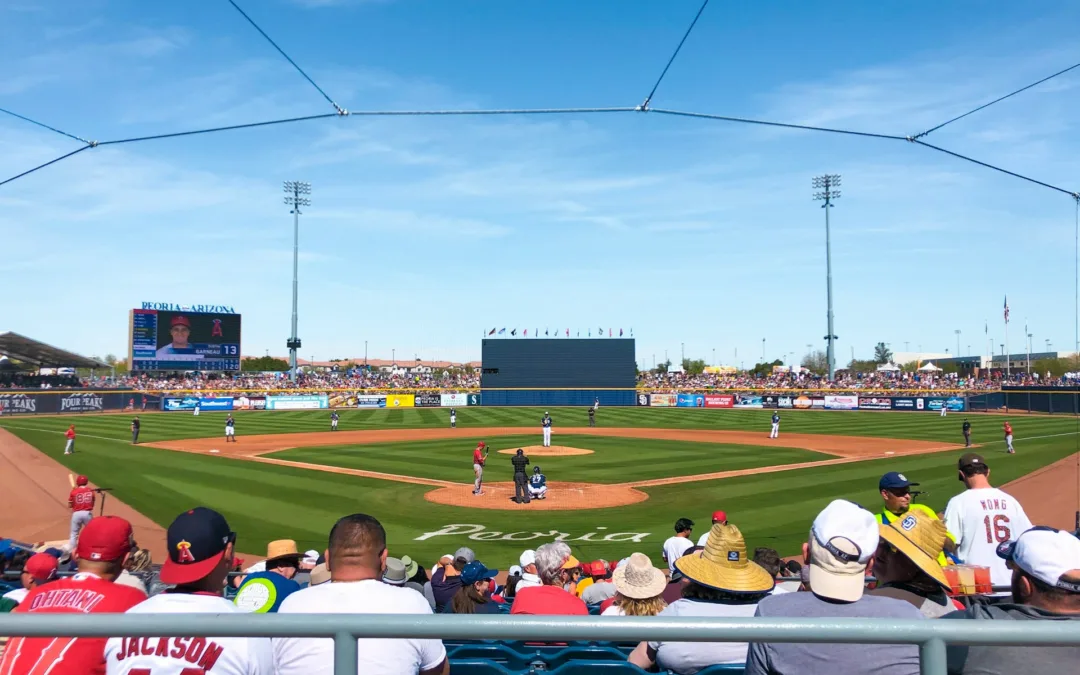
FILE - In this March 10, 2021, file photo, two Salt River wild horses kick up dust as they arrive at a site for emergency feeding run by the Salt River Wild Horse Management Group near Coon Bluff in the Tonto National Forest near Mesa. (AP Photo/Sue Ogrocki, File)
While there are some tours through the Salt River that offer potential sightings along the banks of the wild horses, it’s not hard to see the animals on your own.
Horses ran free throughout the Wild West. Now, they find refuge among the open desert brush in the protected land of national parks.
Of the six national parks in Arizona, the Tonto National Forest is the ninth-largest national park in the country and home to an estimated 400 wild horses. A popular activity for outdoor enthusiasts, wild horse spotting along the Salt River is a hobby that anyone can enjoy if they know when and where to look.
When
According to Visit Mesa, researchers have found that the native mustangs are descended from the horses brought by colonial Spain when establishing the 16th-century Arizona missions. Visitors can spot horses along the banks of the 18-mile stretch of Lower Salt River throughout different times of the day—often when they’re grazing on the river eelgrass.
Per various blogs and local advice, some of the best times to go are also during the most photogenic times of the day: “golden hour.” Anywhere from around 2-3 hours before the sun sets or rises, the wild horses are very active on the river banks. When temperatures are cooler and conditions are right, visitors have also been able to spot them in shaded areas throughout different hours of the day.
Where
The Lower Salt River is a prime place for horse spotting. In order to preserve the natural beauty of the park, travelers are advised to be cautious while driving out or hiking through the forest.
Popular spots many locals have claimed to be the optimal places to spot these horses include Coon Bluff, Pebble Beach, Sheep’s Crossing, Butcher Jones, Granite Reef Picnicking Site, and the Phon D Sutton Recreation Area. When I asked a woman hiking where she suggested, she said they’d likely be within the confines of the trees along the banks of the river. Driving along Bush Highway, be on the lookout for horse crossing signs.
How
While there are some tours through the Salt River that offer potential sightings along the banks of the wild horses, it’s not hard to see the animals on your own. With the wide range of activities that visitors can take part in along the Salt River, there are plenty of opportunities for wild horse spotting.
Within Tonto National Park, there are several recreational sites along the Lower Salt River: the Blue Point, Goldfield, Coon Bluff, Phon D. Sutton, Water Users, and Granite Reef sites. Each is perfect for parking and camping out to enjoy the beautiful sights the forest has to offer. And if guests are up for it, they should try a the non intensive hike along the 2.5-mile Lower Salt River Natural Trail for $8 a pass.
Other methods of going along the river include kayaking, paddleboarding, and tubing. Several rental shops along the Salt River and near the Marina along Tempe Town Lake offer affordably priced gear and equipment along with informational guides.
Experience
Try to get out either before the sun rises or as the sun is setting to avoid the heat as much as you can, much like the horses. Be sure to stick to marked trails if you’re unfamiliar with the area, and watch out for big piles of horse poop and hoofprints to be sure you’re close.
Keep an open ear out as well. Mixed in with the noises of running water and chirping birds, my friend and I were able to hear loud neighing through the trees past a bend, despite not being able to see the horses from our place on the river.
There are plenty of beautiful views along the river banks, accented by the sunrise and sunset. On our walk we said “good morning” to friendly hikers, passed by a group of kayaking enthusiasts on the water, watched the sunrise over the mountains and spotted a few other desert creatures like a dashing coyote, grazing javelinas, a handful of cottontail rabbits, and a family of quails.
READ MORE: 8 top spots for birdwatchers in the Arizona fall and winter

8 rooftop bars in the Valley to keep your spirits high (literally)
When you live in the land of sunshine, it’s only natural to want to spend as much time outdoors as possible — but instead of going for another hike...

The 7 best public high schools in Arizona
Parents searching for top-ranked public high schools in Arizona to send their children to have options. Using scores from US News & World Report...

Must-visit breweries near every spring training stadium in Arizona
Spring training is back in full swing in Arizona. Over a dozen MLB teams are all across the Valley warming up for the regular season. There are 10...

Paradise Valley admin gets students to school amid Arizona bus driver shortage
“If I was fully staffed I would have 110 drivers,” Brandon George said. “Right now I [have] about 52 to 54 drivers. I am 45 to 50 [drivers] short...





